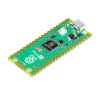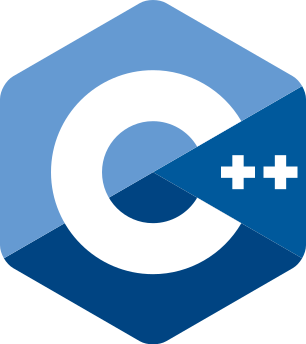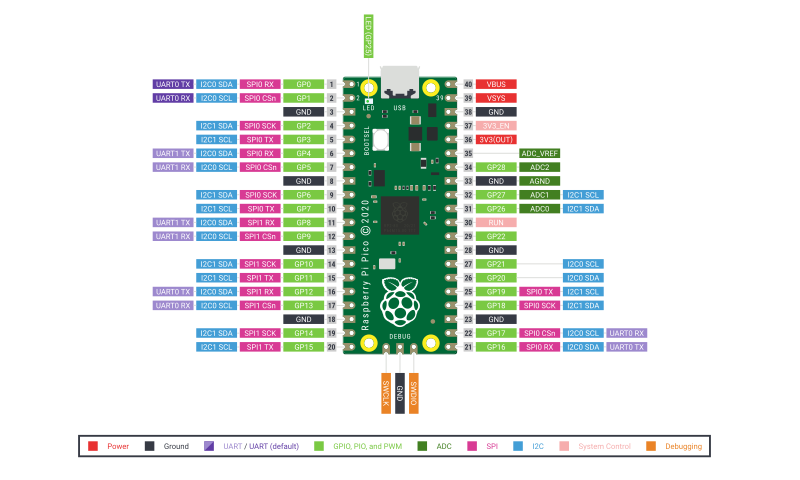- New




zł21.06 tax excl.
Raspberry Pi Pico 2, based on the RP2350 microcontroller, using the application and functional applications of the Cortex M33 and RISC-V cores, doubled SRAM memory and advanced security function, including Arm TrustZone. It is hardware and software with a connected model, which provides an attractive operation for enthusiasts and specialists in systems used

free shipping in Poland for all orders over 500 PLN

If your payment will be credited to our account by 11:00

Each consumer can return the purchased goods within 14 days
Raspberry Pi Pico 2 is a development board based on the RP2350 microcontroller, designed with high performance and security in mind. Compared to the previous version, Pi Pico 2 is characterized by the use of Cortex M33 cores with a higher clock speed, two additional RISC-V cores, doubling the SRAM and memory. In addition, the second version of the iconic board introduces new security features and improved interface capabilities. Raspberry Pi Pico 2 offers a significant increase in performance and functionality while maintaining hardware and software compatibility with earlier models of the Raspberry Pi Pico series.
The RP2350 system offers advanced security features based on Arm TrustZone for Cortex-M technology, including digitally signed boot, 8 KB of OTP antifuse memory for storing keys, SHA-256 acceleration, a hardware TRNG random number generator and fast error detectors. These features, along with the secure boot ROM, are well documented and available to all users, allowing professionals to seamlessly integrate the RP2350 and Raspberry Pi Pico 2 into their projects.

Kamami is the official distributor of Raspberry Pi minicomputers and dedicated accessories.
| Raspberry Pi Pico | Raspberry Pi Pico 2 | |
|---|---|---|
| Microcontroller | RP2040 | RP2350 |
| Core | 2 x ARM Cortex M0+ 133 MHz |
2 x ARM Cortex M33 150 MHz 2 x RISC-V Hazard3 |
| RAM | 256 kB | 520 kB |
| Flash | 2 MB | 4 MB |
| Communication interfaces |
2 x SPI 2 x I2C 2 x UART 3 x 12-bit ADC 16 kanałów PWM 8 x PIO |
2 x SPI 2 x I2C 2 x UART 3 x 12-bit ADC 24 kanały PWM 16 x PIO |
| Programmer interface | USB 1.1 / SWD | USB 1.1 / SWD |
| Security features | - |
Arm TrustZone for Cortex-M Digitally signed boot |
| Supply voltage | 1,8 – 5,5 V | 1,8 – 5,5 V |
| Dimensions | 51 x 21 mm | 51 x 21 mm |

MicroPython is a special version of the Python 3 programming language, prepared to run directly on embedded systems such as the Raspberry Pi Pico. The version prepared especially for the RP2350 microcontroller, supports REPL, an interactive shell that allows you to execute scripts, typing into the console and viewing the results of the program in it. Thanks to this technology, it is also possible to save the program in flash memory.
To facilitate the programming of the RP2350 microcontroller in C / C ++, the Raspberry Pi Foundation has prepared an official SDK toolkit that can be integrated with popular IDEs such as Visual Studio Code or Eclipse. The entire environment configuration process is described in the Getting started with Raspberry Pi Pico document.


The Raspberry Pi Pico can be programmed via the USB interface, it can be done in two ways.
The first is the USB mass storage mode, to program the board in this way, press and hold the BOOTSEL button, and then connect the board to the computer with a USB cable. The device will be recognized as mass memory to which you can upload the program in the same way as copying files to a pendrive. After uploading the program, the microcontroller will automatically reset and start the uploaded program. This method is suitable for uploading programs written in C / C ++ or for uploading the MicroPython interpreter.
The second way works only with programs written in MicroPython and requires prior loading of the interpreter using the first method. This method consists in saving the program layout transferred with REPL in the memory.
When programming in C/C++, there is often a need to repeatedly test the program. Loading a program via USB requires repeating the procedure every time, disconnecting the board from the computer, pressing the button and connecting the board, and then finding the compiled program and copying it to memory. The whole thing takes quite a long time, but fortunately it can be simplified using an external programmer with SWD interface. Programming via SWD is much faster, you only need to connect the programmer once with a 3-pin connector and power supply e.g. via USB and you can upload programs directly from the IDE. In addition, you can debug the program in this way and efficiently find any errors in the code by running it line by line.
Warning!
The Raspberry Pi Pico board does not include goldpin connectors and a microUSB cable. Our offer includes connectors for GPIO 1x40 (they can be easily divided into two 1x20 connectors) and a connector 1x3 for a programmer. There are also ready-made kits containing connectors and microUSB cable.

The first microcontroller designed by the Raspberry Pi foundation, equipped with two ARM Cortex M0 + cores clocked at 133 MHz, 264 KB of RAM and 30 ports with I2C, SPI, UART and USB interfaces. External flash memory can be connected via the QSPI interface. The system can be programmed in C / C ++ or microPython. Raspberry Pi SC0908
The board with the RP2040 microcontroller equipped with two ARM Cortex-M0 + cores operating at a frequency of 133 MHz, 264 kB RAM. The board also has 2 MB of QSPI flash memory. In addition, the board is equipped with the Infineon CYW43439 system, extending the board with wireless connectivity. Version with soldered connectors. Raspberry Pi SC0919
Starter kit containing Raspberry Pi Pico, necessary connectors and a microUSB cable. The kit is recommended for people programming in MicroPython
The board with the RP2040 microcontroller equipped with two ARM Cortex-M0 + cores operating at a frequency of 133 MHz, 264 kB RAM. The board also has 2 MB of QSPI flash memory. In addition, the board is equipped with the Infineon CYW43439 system, extending the board with wireless connectivity. Raspberry Pi SC0918
Module with the RP2040 microcontroller with two ARM Cortex-M0 + cores operating at 133 MHz, 256 kB RAM and 30 GPIO. The board also has 2 MB of external QSPI flash memory. Module can be programmed in C/C++ or microPython. Raspberry Pi Pico
Matrix display module with Raspberry Pi Pico W control board. It has built-in 583 RGB LEDs in a 53 x 11 layout, an amplifier with speaker and buttons. Ideal for building a clock, displaying sensor data or presenting weather data. Pimoroni PIM631
Starter kit with 15 modules useful for learning (button, LED, display, sensors, etc.). Ideal for starting your adventure in electronics and programming. Waveshare Pico-Sensor-Kit-B
Module with the RP2040 microcontroller with two ARM Cortex-M0 + cores operating at 133 MHz, 256 kB RAM and 30 GPIO. The board also has 2 MB of external QSPI flash memory. Module can be programmed in C/C++ or microPython. Version with soldered connectors. Raspberry Pi SC0917

Raspberry Pi Pico 2, based on the RP2350 microcontroller, using the application and functional applications of the Cortex M33 and RISC-V cores, doubled SRAM memory and advanced security function, including Arm TrustZone. It is hardware and software with a connected model, which provides an attractive operation for enthusiasts and specialists in systems used
